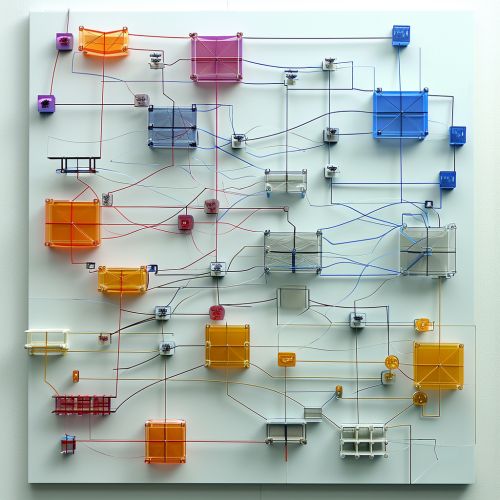Entity-Relationship Model
Introduction
The Entity-Relationship Model (ERM) is a conceptual tool used in software engineering and database design. It is a type of data model that visually represents the logical structure of databases. ERM is used to define the conceptual schema for a database, independent of all physical considerations.


Conceptual Overview
The ERM is based on a collection of basic objects, known as entities, and relationships among these objects. An entity is a thing or object in the real world that is distinguishable from all other objects. For example, in a school database, students, teachers, classes, and courses offered can be considered as entities. All these entities have some attributes or properties that give them their identity.
Entities
Entities are the fundamental objects in the ERM. They represent real-world objects or concepts that the database needs to keep track of. Entities are categorized into 'strong' or 'regular' entities and 'weak' or 'dependent' entities. A strong entity is one that can exist independently of other entities, while a weak entity can only exist when tied to another entity.
Attributes
Attributes are properties or characteristics of entities. For example, a student entity might have attributes such as student ID, name, and age. Attributes can be classified into several types:
- Simple attributes: These cannot be divided further. For example, a student's name may be a simple attribute.
- Composite attributes: These can be divided into smaller sub-parts. For example, a student's address can be a composite attribute with sub-attributes like street, city, and zip code.
- Derived attributes: These are not stored in the database but can be derived from other attributes. For example, a student's age can be derived from the date of birth.
- Multi-valued attributes: These can have more than one value. For example, a student can have multiple phone numbers.
Relationships
In the ERM, relationships are associations or interactions between entities. Relationships can be unary, binary, or ternary in nature. Unary relationships have only one participant—the entity is related to itself. Binary relationships, the most common type, involve two entities. Ternary relationships involve three entities.
Entity Sets and Relationship Sets
Entity sets and relationship sets provide a more mathematical definition of entities and relationships. An entity set is a set of entities of the same type that share the same attributes, while a relationship set is a set of relationships of the same type.
Cardinality
Cardinality refers to the maximum number of times an instance in one entity can relate to instances of another entity. Cardinality can be of different types like one-to-one, one-to-many, and many-to-many.
E-R Diagrams
E-R Diagrams are a visual representation of the ERM. They consist of entities, which are represented by rectangles, and relationships, which are represented by diamonds. Attributes are represented by ovals and are connected to their own entities with a line.
Advantages and Disadvantages of ERM
The ERM has several advantages. It provides a clear and systematic way of visualizing the design of a database. It is easy to understand, even for people without technical knowledge. However, it also has some disadvantages. It can become complex and difficult to manage with large databases. It does not handle the representation of all types of data, especially complex data types.
Conclusion
The Entity-Relationship Model is a powerful tool for designing and implementing databases. It provides a clear and systematic way of visualizing the design of a database. However, like any tool, it has its limitations and should be used judiciously.
